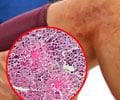Ann. Allergy Asthma Immunol. 2020 Jan 30
Utilizing Endotypes, Phenotypes, and Inflammatory Markers to Guide Treatment Decisions in Chronic Rhinosinusitis.
Staudacher AG, Peters AT, Kato A, Stevens WW
With the advent of new treatment options for Chronic Rhinosinusitis (CRS) comes the ability for physicians to provide more individualized patient care ...
Read More
Source: PubMed
Allergol Int 2020 Jan 29
Dupilumab: Basic aspects and applications to allergic diseases.
Matsunaga K, Katoh N, Fujieda S, Izuhara K, Oishi K
Interleukin (IL)-4 and IL-13, signature type 2 cytokines, exert their actions by binding to two types of receptors sharing the IL-4R a chain (IL-4Ra). ...
Read More
Source: PubMed
J Allergy Clin Immunol Pract 2020 Jan 28
Current and Future Treatments of Rhinitis and Sinusitis.
Patel GB, Kern RC, Bernstein JA, Hae-Sim P, Peters AT
Advances in understanding the pathogenic mechanisms of both rhinitis and chronic rhinosinusitis have resulted in new treatment options, especially for ...
Read More
Source: PubMed
J. Allergy Clin. Immunol. 2020 Jan 27
Endotypes of chronic rhinosinusitis: impact on management.
Cardell LO, Stjärne P, Jonstam K, Bachert C
Following the trend in asthma, endotypes for chronic rhinosinusitis with nasal polyps (CRSwNP) have been established, with Type 2 immune reactions rep ...
Read More
Source: PubMed
Braz J Otorhinolaryngol 2020 Jan 15
High PI3K/mTOR and low MAPK/JNK activity results in decreased apoptosis and autophagy in nasal polyposis.
Simsek F, Eren E, Bahceci S, Aladag I
Nasal polyposis is a progressive inflammatory disease that reduces the quality of life. The role - of apoptotic and autophagic pathways in nasal polyp ...
Read More
Source: PubMed










